
Kagoshima: The City of Volcanoes and Hot Springs
Discover Kagoshima: A beautiful blend of natural wonders, historical treasures, and vibrant culture in the shadow of the majestic Sakurajima volcano.
Kagoshima, located in the southernmost part of Kyushu, Japan, is a city known for its stunning natural beauty and vibrant culture. The city is often called the 'Naples of the Eastern World' because of its picturesque bay, mild climate, and the imposing Sakurajima volcano that towers across the bay. This active volcano is one of the most famous landmarks of Kagoshima, offering breathtaking views and unique experiences for visitors. Another highlight of Kagoshima is its abundance of hot springs, known as 'onsen.' These natural hot baths are perfect for relaxation and rejuvenation, providing a traditional Japanese experience. The Ibusuki Onsen, famous for its sand baths, is a must-visit. Here, you can be buried in naturally heated sand, which is believed to have healing properties. Kagoshima is also rich in history and culture. The Sengan-en Garden, a beautiful Japanese landscape garden, offers a glimpse into the lifestyle of the ancient Shimazu clan. The garden features ponds, streams, shrines, and a stunning view of Sakurajima. Additionally, the Kagoshima City Aquarium and the Shiroyama Observatory provide more opportunities to appreciate the city's natural and cultural wealth.
Local tips in Kagoshima
- The best time to visit Kagoshima is from late March to May and from September to November, when the weather is mild.
- If you plan to visit Sakurajima, be sure to check the volcanic activity reports and follow local safety guidelines.
- Try the local cuisine, especially the 'Kurobuta' pork and 'Satsuma-age' fried fish cakes, which are local specialties.
- Purchase a one-day pass for the Kagoshima City View Bus to easily explore the city's main attractions.
- Wear comfortable shoes, as many of Kagoshima's attractions involve walking.
Kagoshima: The City of Volcanoes and Hot Springs
Kagoshima, located in the southernmost part of Kyushu, Japan, is a city known for its stunning natural beauty and vibrant culture. The city is often called the 'Naples of the Eastern World' because of its picturesque bay, mild climate, and the imposing Sakurajima volcano that towers across the bay. This active volcano is one of the most famous landmarks of Kagoshima, offering breathtaking views and unique experiences for visitors. Another highlight of Kagoshima is its abundance of hot springs, known as 'onsen.' These natural hot baths are perfect for relaxation and rejuvenation, providing a traditional Japanese experience. The Ibusuki Onsen, famous for its sand baths, is a must-visit. Here, you can be buried in naturally heated sand, which is believed to have healing properties. Kagoshima is also rich in history and culture. The Sengan-en Garden, a beautiful Japanese landscape garden, offers a glimpse into the lifestyle of the ancient Shimazu clan. The garden features ponds, streams, shrines, and a stunning view of Sakurajima. Additionally, the Kagoshima City Aquarium and the Shiroyama Observatory provide more opportunities to appreciate the city's natural and cultural wealth.
When is the best time to go to Kagoshima?
Iconic landmarks you can’t miss
Sengan-en
Discover the serene beauty and historical significance of Sengan-en, a stunning Japanese garden in Kagoshima that encapsulates the essence of Japanese culture.

Yunohira Observation Deck
Discover stunning views of Sakurajima Volcano and Kagoshima Bay at the Yunohira Observation Deck, a serene escape for nature lovers and adventurers alike.

The Museum birthplace of the Meiji Restoration.
Discover the transformative era of Japan at the Museum of the Meiji Restoration, a captivating local history museum in Kagoshima.

Unmissable attractions to see
Sengan-en
Experience the serene beauty and rich history of Sengan-en, a stunning garden and cultural landmark in Kagoshima, Japan.
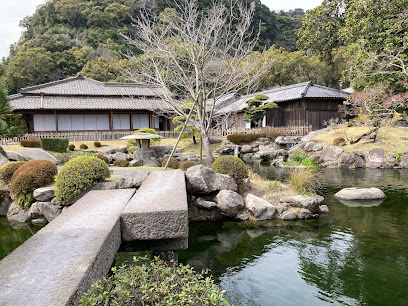
Yamakataya Dept. Store
Explore Yamakataya Department Store in Kagoshima for a unique shopping experience featuring local crafts, fashion, and delicious cuisine.
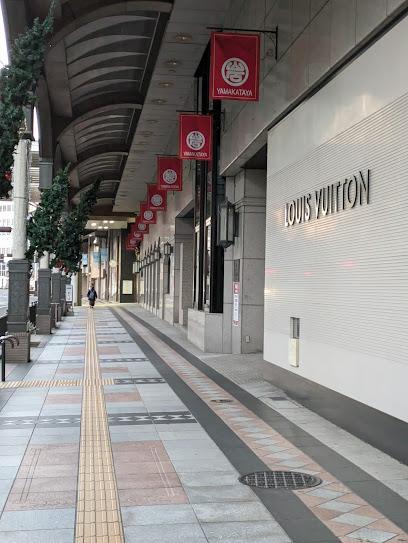
Kurokami Buried Shrine Gate
Explore the enchanting Kurokami Buried Shrine Gate in Kagoshima, a historical landmark rich in culture and surrounded by natural beauty.

Shiroyama Park
Discover the beauty and tranquility of Shiroyama Park, Kagoshima's scenic retreat featuring breathtaking views, lush landscapes, and rich history.

Reimeikan - Kagoshima History Museum and Fine Arts Center
Discover the cultural heritage of Kagoshima at Reimeikan, a captivating museum showcasing history and fine arts.

Yoshino Park kagoshima
Explore the tranquil beauty of Yoshino Park in Kagoshima, where lush landscapes and cultural heritage await every visitor.
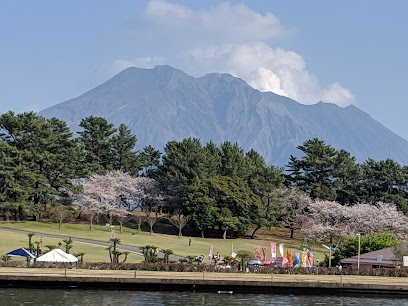
Shiroyama Park
Explore the breathtaking views and serene landscapes of Shiroyama Park in Kirishima, a perfect escape for nature lovers and cultural enthusiasts alike.

Yamakataya Shokudo
Experience the authentic flavors of Kagoshima at Yamakataya Shokudo, a must-visit destination for food lovers in Japan.

Kagoshima Prefectural Museum
Discover the vibrant history and culture of Kagoshima at the Kagoshima Prefectural Museum, a treasure trove of art and artifacts.

Tsukiyomi Shrine
Experience the serene beauty and spiritual significance of Tsukiyomi Shrine in Kagoshima, a must-visit destination for every traveler.

Xavier Park
Discover the tranquil beauty and historical significance of Xavier Park, a serene oasis in the heart of Kagoshima, Japan.

Nishi-Hongwanji
Discover the serenity of Nishi-Hongwanji, a beautiful Buddhist temple in Kagoshima, where tranquility meets rich cultural heritage.

Iso Beach
Discover the tranquil beauty of Iso Beach in Kagoshima, where pristine sands meet stunning sunsets in a serene coastal paradise.
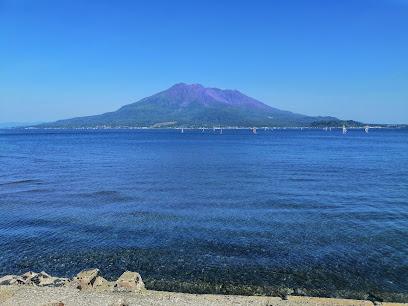
Lotteria
Experience the unique flavors of Lotteria in Kagoshima, where delicious hamburgers meet a casual dining atmosphere.

Kanosuke Distillery
Experience the art of Japanese whiskey making at Kanosuke Distillery in Kagoshima, where tradition meets innovation in every sip.

Essential places to dine
Tenmonkan Mujaki main shop
Savor the exquisite flavors of Japan at Tenmonkan Mujaki - Kagoshima's premier destination for delightful shaved ice and authentic desserts.

Mawaru Sushi Mekkemon Dolphin Port
Discover authentic Japanese cuisine at Mawaru Sushi Mekkemon in Dolphin Port, Kagoshima - where every bite is a taste of tradition.

Kawakyu
Discover the authentic taste of Japan at Kawakyu, Kagoshima's premier tonkatsu restaurant offering deliciously crispy pork cutlets.

Tenmonkan Wakana
Experience the essence of Japanese cuisine at Tenmonkan Wakana with exquisite kaiseki and delightful kushiyaki in Kagoshima.
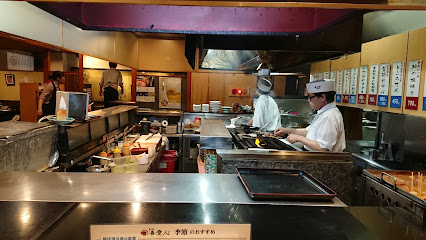
Kuro Katsu Tei
Experience the best tonkatsu in Kagoshima at Kuro Katsu Tei - where crispy meets tender in every delicious bite.

Ajimori
Discover the exquisite flavors of Kagoshima at Ajimori, where authentic Shabu Shabu meets exceptional dining experiences.

Yushokutonsai Ichiniisan Tenmonkanten
Experience authentic Shabu Shabu and Sukiyaki at Yushokutonsai Ichiniisan Tenmonkanten in Kagoshima – a culinary journey not to be missed.

Juan Central Station West Entrance Branch
Experience authentic Shabu Shabu and Tonkatsu at Juan Central Station West Entrance Branch in Kagoshima – a feast for all food enthusiasts.

Kurokatsutei Kurobe Tenmonkan
Experience authentic Japanese cuisine at Kurokatsutei Kurobe Tenmonkan in Kagoshima—home to the finest tonkatsu and delightful dining.

Kumasotei
Discover authentic Japanese flavors at Kumasotei in Kagoshima - indulge in shabu-shabu and sukiyaki amidst a warm izakaya atmosphere.
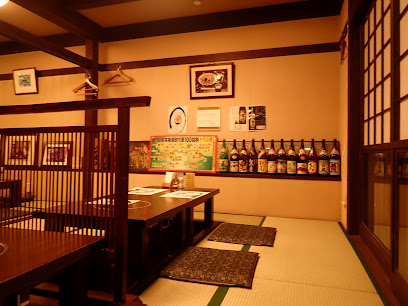
Yushokutonsaiichiniisan Kagoshima Honten
Experience authentic Kagoshima cuisine at Yushokutonsaiichiniisan – where tradition meets flavor in every bite.
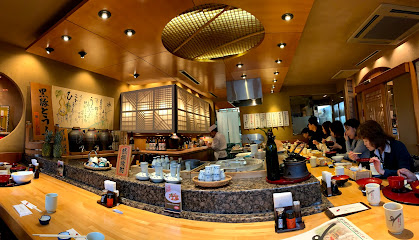
Karen Kagoshima Branch
Experience authentic Shabu Shabu at Karen Kagoshima - where premium meats meet fresh ingredients for an unforgettable dining adventure.

Kurobuta
Discover Kagoshima's culinary gem with exquisite tonkatsu and authentic Japanese meat dishes at Kurobuta.

Ichiniisan - AMU Plaza Kagoshima
Experience authentic Shabu Shabu at Ichiniisan in AMU Plaza Kagoshima—where quality meets tradition in every delicious bite.

Gyu do!
Experience top-tier yakiniku at Gyu do! in Kagoshima—where every bite of premium Korean beef is grilled to perfection.

Markets, malls and hidden boutiques
Amu Plaza Kagoshima
Discover the vibrant shopping and dining experience at Amu Plaza Kagoshima, where modern retail meets traditional Japanese culture.

イオン鹿児島店
Explore Aeon Mall Kagoshima: A Shopping Paradise with Local Flavors and International Brands, Perfect for Every Traveler.

Yamakataya Dept. Store
Discover a vibrant shopping experience at Yamakataya Department Store, where tradition meets modernity in the heart of Kagoshima.

Frespo Jungle Park
Explore Frespo Jungle Park, a vibrant shopping mall in Kagoshima offering diverse stores, entertainment, and delightful dining experiences for all ages.

Aeon Kagoshima-Central Store
Explore the vibrant flavors of Kagoshima at Aeon Kagoshima-Central Store, where local produce meets cultural experiences.

さつまち鹿児島中央駅 みやげ横丁
Discover unique souvenirs and local delicacies at Satsumachi Kagoshima Central Station Souvenir Alley, a vibrant shopping destination in the heart of Kagoshima.

Kagoshima LOFT
Explore Kagoshima LOFT, the ultimate shopping destination featuring cosmetics, home goods, and unique novelties that capture the essence of Japan.

HANDS Kagoshima Store
Explore the eclectic offerings at HANDS Kagoshima Store, your ultimate destination for unique gifts, DIY supplies, and local treasures.

Kagoichi
Discover Kagoichi in Kagoshima for authentic souvenirs, unique handicrafts, and local liquors, perfect for any traveler seeking a piece of Japan.

Satsuma Jokiya Tenmonkan Store
Experience the authentic taste of Japanese confectionery at Satsuma Jokiya Tenmonkan Store, where tradition and sweetness come together.
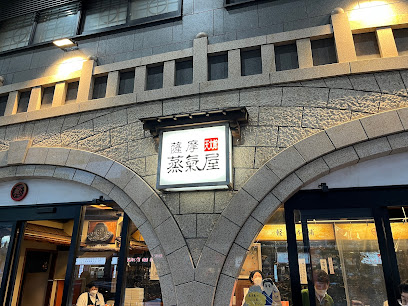
BARIPA
Experience the charm of Kagoshima at Baripa, a unique store showcasing local culture, crafts, and contemporary fashion.
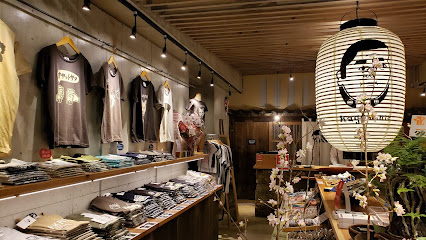
天文館商店街
Discover the charm of Tenmonkan Shopping Arcade in Kagoshima, where shopping, dining, and local culture come alive in a vibrant atmosphere.

Sengan-en Brand Shop
Explore unique local gifts at Sengan-en Brand Shop in Kagoshima, where tradition meets exceptional craftsmanship.

(公社)鹿児島県特産品協会 鹿児島ブランドショップ
Discover the essence of Kagoshima at the Kagoshima Brand Shop, where local crafts and culinary delights await every visitor.

鹿児島天文館本通り
Discover the heart of Kagoshima at Tenmonkan, a vibrant shopping arcade filled with local shops, delicious food, and cultural experiences.

Essential bars & hidden hideouts
Honkaku Shochu Bar ISHIZUE
Discover the essence of Kagoshima at Honkaku Shochu Bar ISHIZUE, where authentic shochu meets vibrant atmosphere.
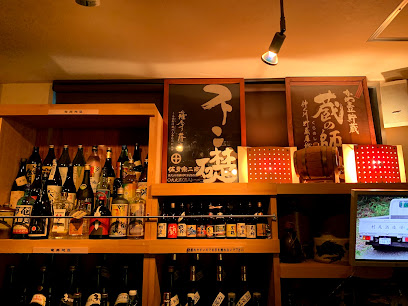
Cocktail Cre8 ゆらぎ
Discover the art of cocktail making at Cocktail Cre8 ゆらぎ, a stylish bar in Kagoshima offering an exquisite drink experience in a vibrant setting.

High Bridge
Discover the vibrant nightlife at High Bridge, Kagoshima's premier cocktail bar, featuring expertly crafted drinks and a welcoming atmosphere.

Obara
Experience the artistry of cocktail making at Obara, Kagoshima's stylish cocktail bar offering a unique blend of flavors and vibrant nightlife.

Manosu
Experience the energy and charm of Manosu, Kagoshima's premier bar offering crafted cocktails and a vibrant nightlife experience.

BAR S.A.O
Discover the vibrant nightlife at BAR S.A.O, Kagoshima's premier bar offering exquisite drinks and a lively atmosphere for travelers.

Stinger
Discover the vibrant nightlife of Kagoshima at Stinger, a festive bar offering a diverse drink selection and a lively atmosphere for all visitors.

tiki bar BEATNIK
Discover the lively and tropical charm of Tiki Bar BEATNIK in Kagoshima, where delicious cocktails and a vibrant atmosphere await.

whisky house DUFFTOWN
Discover the heart of Kagoshima's nightlife at Whisky House Dufftown, where whisky enthusiasts unite to savor an exquisite selection of spirits in a cozy atmosphere.

Cape Cod Backyard Bar
Discover the lively atmosphere of Cape Cod Backyard Bar in Kagoshima, where local flavors and vibrant entertainment come together for an unforgettable experience.

イパネマ(BAR IPANEMA)
Discover the vibrant nightlife at Bar Ipanema in Kagoshima, where cocktails and camaraderie come together in a lively atmosphere.

BAR・HAVANA
Discover the nightlife of Kagoshima at BAR・HAVANA, where vibrant cocktails and a welcoming atmosphere await every visitor.

鹿児島焼酎Bar 鹿 ROKU
Discover the essence of Kagoshima with a unique shochu experience at Bar ROKU, where tradition meets vibrant nightlife.

BarPENNY
Experience the vibrant nightlife of Kagoshima at BarPENNY, where great drinks and good company come together in a lively atmosphere.

鹿児島 天文館 BAR SAMSARA since.1988
Discover the exciting cocktail culture at Bar Samsara, Kagoshima's iconic bar since 1988, perfect for tourists seeking vibrant nightlife.

Local Phrases about Kagoshima
-
- Helloこんにちは
[konnichiwa] - Goodbyeさようなら
[sayonara] - Yesはい
[hai] - Noいいえ
[iie] - Please/You're welcomeどうぞ
[douzo] - Thank youありがとうございます
[arigatou gozaimasu] - Excuse me/Sorryすみません
[sumimasen] - How are you?お元気ですか?
[ogenki desu ka?] - Fine. And you?元気です。あなたは?
[genki desu. anata wa?] - Do you speak English?英語を話せますか?
[eigo o hanasemasu ka?] - I don't understandわかりません
[wakarimasen]
- Helloこんにちは
-
- I'd like to see the menu, pleaseメニューを見せてください
[menyuu o misete kudasai] - I don't eat meat肉は食べません
[niku wa tabemasen] - Cheers!乾杯!
[kanpai!] - I would like to pay, pleaseお会計をお願いします
[okaikei o onegaishimasu]
- I'd like to see the menu, pleaseメニューを見せてください
-
- Help!助けて!
[tasukete!] - Go away!去って!
[satte!] - Call the Police!警察を呼んで!
[keisatsu o yonde!] - Call a doctor!医者を呼んで!
[isha o yonde!] - I'm lost道に迷いました
[michi ni mayoimashita] - I'm ill具合が悪いです
[guai ga warui desu]
- Help!助けて!
-
- I'd like to buy...買いたいです...
[kaitai desu...] - I'm just looking見てるだけです
[miteru dake desu] - How much is it?いくらですか?
[ikura desu ka?] - That's too expensiveそれは高すぎます
[sore wa takasugimasu] - Can you lower the price?値段を下げてもらえますか?
[nedan o sagete moraemasu ka?]
- I'd like to buy...買いたいです...
-
- What time is it?今何時ですか?
[ima nanji desu ka?] - It's one o'clock一時です
[ichiji desu] - Half past (10)十時半
[juuji han] - Morning朝
[asa] - Afternoon午後
[gogo] - Evening夕方
[yugata] - Yesterday昨日
[kinou] - Today今日
[kyou] - Tomorrow明日
[ashita] - 1一
[ichi] - 2二
[ni] - 3三
[san] - 4四
[shi] - 5五
[go] - 6六
[roku] - 7七
[nana] - 8八
[hachi] - 9九
[kyuu] - 10十
[juu]
- What time is it?今何時ですか?
-
- Where's a/the...?...はどこですか?
[... wa doko desu ka?] - What's the address?住所は何ですか?
[juusho wa nan desu ka?] - Can you show me (on the map)?地図で見せてもらえますか?
[chizu de misete moraemasu ka?] - When's the next (bus)?次の(バス)はいつですか?
[tsugi no (basu) wa itsu desu ka?] - A ticket (to ....)チケット(... まで)
[chiketto (... made)]
- Where's a/the...?...はどこですか?
History of Kagoshima
-
Kagoshima is renowned as the birthplace of Saigo Takamori, one of Japan's most influential samurai during the late Edo period. Saigo Takamori played a pivotal role in the Meiji Restoration, which marked the end of the feudal shogunate and the modernization of Japan. His legacy is celebrated in Kagoshima with statues, museums, and historical sites dedicated to his memory.
-
Kagoshima was historically known as the Satsuma Domain, ruled by the powerful Shimazu clan for over seven centuries. The Shimazu clan was instrumental in various key historical events, including the unification of Japan under Tokugawa Ieyasu and the introduction of Western technology and culture to Japan. The clan's influence is evident in Kagoshima's numerous castles, gardens, and samurai residences.
-
The Satsuma Rebellion of 1877 was a significant uprising led by Saigo Takamori against the Meiji government. The rebellion was a reaction to the rapid modernization and westernization of Japan, which many samurai felt threatened their traditional way of life. The rebellion ultimately ended in defeat for the samurai, marking the end of the samurai era in Japan. The sites of key battles and memorials in Kagoshima offer a glimpse into this turbulent period.
-
Kagoshima is dominated by the active volcano, Sakurajima, which has shaped the region's geography and culture. The volcano has erupted numerous times throughout history, with one of the most significant eruptions occurring in 1914. The volcanic soil has contributed to the region's fertile land, making it ideal for agriculture. Sakurajima is a symbol of Kagoshima and can be seen from various vantage points throughout the city.
-
During World War II, Kagoshima served as a strategic military base for the Japanese navy. The city was heavily bombed by Allied forces, resulting in significant destruction and loss of life. The rebuilding of Kagoshima after the war is a testament to the resilience and determination of its people. Several war memorials and museums in the city provide insight into Kagoshima's experience during this tumultuous period.
-
Kagoshima is rich in cultural heritage, with traditional festivals that celebrate the region's history and customs. The Ohara Festival, one of the largest in Kagoshima, features traditional music, dance, and parades. The city is also known for its unique cuisine, including dishes such as kurobuta (black pork) and satsuma-age (fried fish cakes). These festivals and culinary delights offer a vibrant glimpse into the living culture of Kagoshima.
-
Kagoshima's historical connections with the Ryukyu Kingdom (present-day Okinawa) played a significant role in regional trade and cultural exchange. In the early 17th century, the Shimazu clan conquered the Ryukyu Kingdom, which led to a unique blend of Ryukyu and Japanese cultures in Kagoshima. Artifacts, historical documents, and cultural practices from this period can be explored in local museums.
-
In the late 19th and early 20th centuries, Kagoshima underwent rapid industrialization, transforming from a feudal domain to a modern city. The introduction of Western technology and education, spearheaded by influential figures like Shimazu Nariakira, played a crucial role in this transformation. Kagoshima's industrial heritage is preserved in sites such as the Shuseikan industrial complex, which is part of the UNESCO World Heritage-listed Sites of Japan's Meiji Industrial Revolution.
Kagoshima Essentials
-
Kagoshima is located on the southern tip of Kyushu Island in Japan. The nearest international airport is Kagoshima Airport, which is approximately 30 kilometers from the city center. From the airport, you can take a limousine bus, which takes about 40 minutes to reach Kagoshima Chuo Station. Alternatively, you can take a taxi or rent a car. For those traveling by train, the Kyushu Shinkansen line connects Kagoshima Chuo Station with major cities like Fukuoka and Kumamoto. Ferries are also available from nearby islands such as Yakushima and Sakurajima.
-
Kagoshima offers a variety of transportation options. The city's public transport includes buses and trams, which are efficient and cover most tourist attractions. For more flexibility, taxis are readily available and can be hailed on the street or booked via phone. Renting a car is another convenient option, especially for exploring areas outside the city. For short trips, bicycles can be rented from various locations around the city. The Kagoshima City View Bus is a popular choice for tourists, offering a loop route that stops at major attractions.
-
The official currency in Japan is the Japanese Yen (JPY). Credit cards are widely accepted in hotels, restaurants, and larger shops in Kagoshima, but it is advisable to carry cash for smaller establishments and rural areas. ATMs are available throughout the city, including at convenience stores like 7-Eleven and Lawson, which accept international cards. It's also a good idea to have some cash on hand for public transportation and small purchases.
-
Kagoshima is generally a safe city for tourists. However, it is always wise to take standard precautions. Avoid walking alone at night in unfamiliar areas and keep an eye on your belongings in crowded places. While Kagoshima does not have specific high-crime areas targeting tourists, staying vigilant and aware of your surroundings is recommended. Emergency contact numbers should be saved on your mobile phone, and local police stations can provide assistance if needed.
-
In case of an emergency, dial 110 for police assistance and 119 for fire or medical emergencies. Kagoshima has several hospitals and clinics that can handle medical emergencies, and many staff members speak English. It is strongly recommended to have travel insurance that covers medical emergencies. For minor health issues, pharmacies (yakkyoku) are widely available, where you can purchase over-the-counter medications.
-
Fashion: Do dress modestly, especially when visiting religious sites. Avoid overly casual or revealing clothing. Religion: Do respect local customs and traditions. Always remove your shoes when entering temples and shrines. Public Transport: Do be respectful and give up your seat to elderly passengers, pregnant women, and those with disabilities. Don't talk loudly or use your phone on public transport. Greetings: Do greet people with a slight bow. Handshakes are becoming more common but are usually reserved for business settings. Eating & Drinking: Do try local delicacies and accept food offerings graciously. Don't leave food on your plate, as it is considered wasteful and impolite.
-
To experience Kagoshima like a local, visit the local markets and sample fresh produce and traditional foods. Kagoshima's Kurobuta pork and sweet potatoes are must-tries. Engage with locals, as they are often friendly and willing to share stories about the city's history and culture. Don't miss the opportunity to relax in a local onsen (hot spring), especially in areas like Ibusuki, known for its unique sand baths. For a unique experience, take a ferry to Sakurajima, an active volcano, and explore the island's hiking trails and observation points.
Nearby Cities to Kagoshima
-
Things To Do in Hiroshima
-
Things To Do in Busan
-
Things To Do in Jeju City
-
Things To Do in Ulsan
-
Things To Do in Suncheon
-
Things To Do in Gyeongju
-
Things To Do in Daegu
-
Things To Do in Pohang
-
Things To Do in Gwangju
-
Things To Do in Mokpo
-
Things To Do in Jeonju
-
Things To Do in Osaka
-
Things To Do in Andong
-
Things To Do in Nara
-
Things To Do in Daejeon










